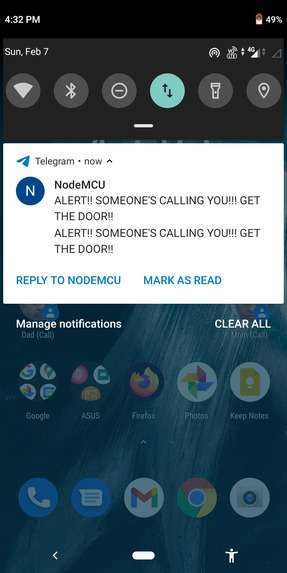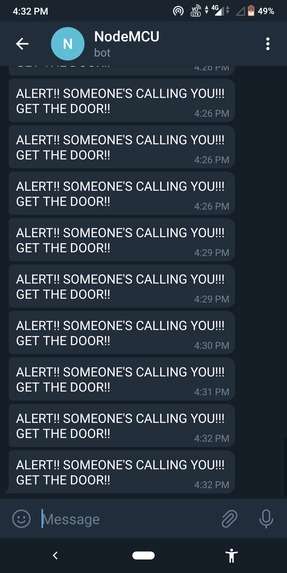Introduction
Due to the COVID 19 pandemic, we have seen the world move from physical to online mediums of interaction. This is a door bell system which can alert us whenever someone presses the button. During online video calls like Zoom, Google Meet or Skype, we might not be able to hear someone calling us at our house or even we might miss the doorbell. As the button is pressed, an alert message window would be displayed over the computer screen along with a loud beeping sound. Also, it would send a telegram message to the telegram account which is connected to the system.
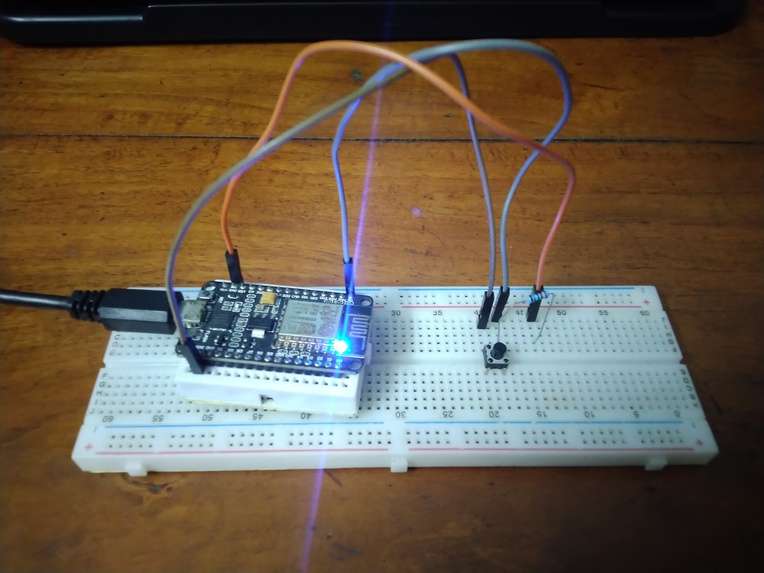
Description
The host PC and the ESP8266 board are connected to the same WiFi network. Whenever the button connected to the ESP8266 board is pressed, a alert window message is displayed over the screen along with a loud beep sound. Immediately a Telegram message is sent to the Telegram BOT connected with the code. So even if someone is attending the online video call on a smartphone, they would get an alert over Telegram.
Build Procedure
The project is made by using an ESP8226 WiFi board. A push button is connected to the board. The main communication protocol for the project is based on MQTT protocol over WiFi. The MQTT broker is run on the host PC and then the python subscriber node is started. The publisher node is run on the ESP8266 board. The publisher node on ESP8266 sends a message to the subscriber python node on the host PC through the MQTT broker. Depending on the message received by the subscriber python node, whenever the button is pressed, an alert window made with Python Tkinter library is displayed. A beep sound is produced using the python OS beep class. Then with the help of requests, a message is sent to the the Telegram message bot.
Steps to setup MQTT with ESP8266 https://www.electronicwings.com/nodemcu/nodemcu-mqtt-client-with-arduino-ide
const char* ssid = "ssid_name";
const char* password = "password";
const char* mqtt_server = "192.168.XX.XX";In the above code from the ESP8266 code in Arduino IDE, change the SSID and Password to the credentials of a wifi network. Also change the mqtt_server IP address with the IP address of the computer which runs the MQTT Broker.
Circuit
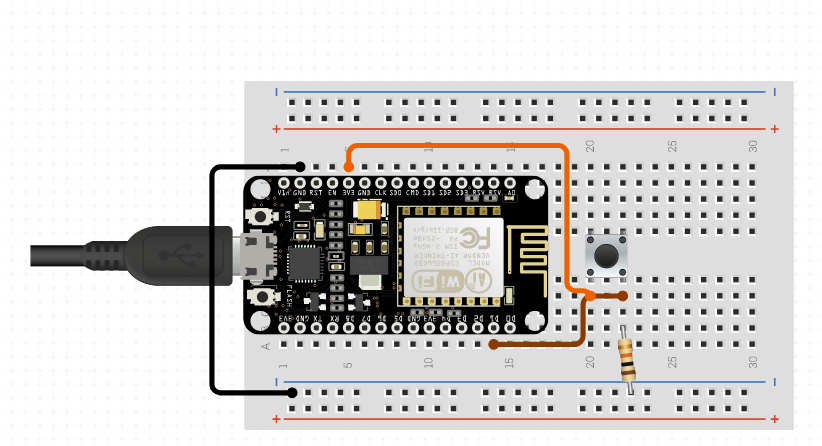
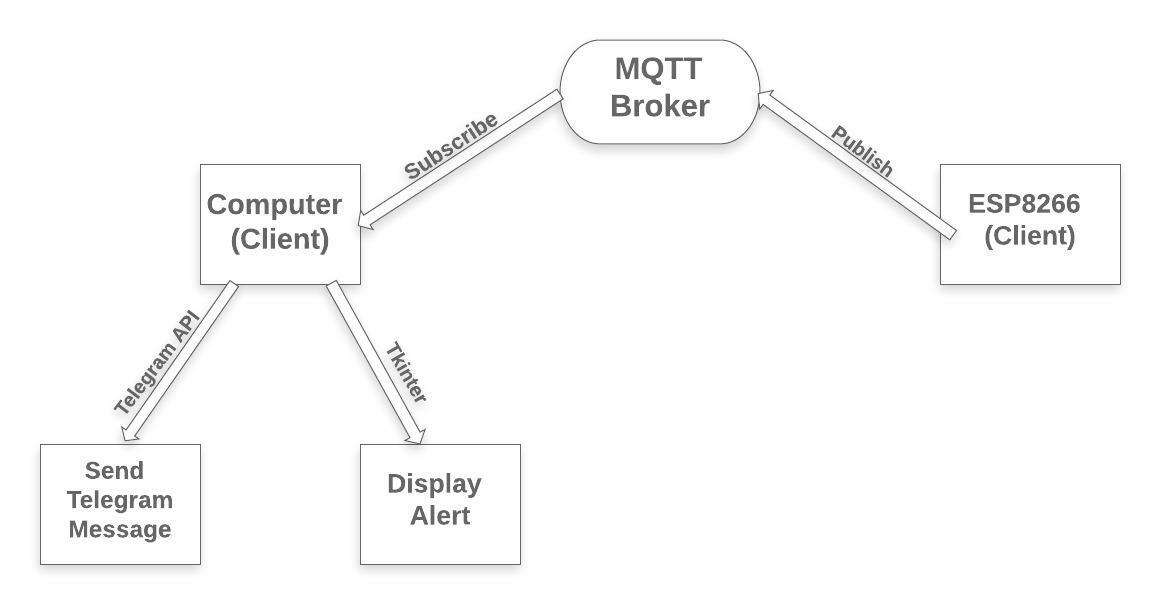
Result
